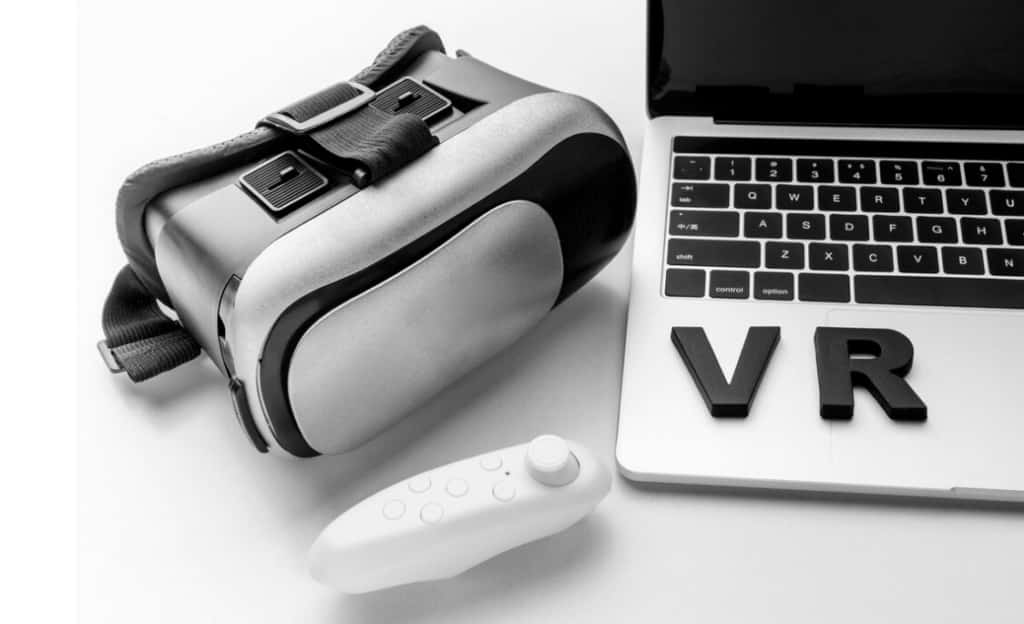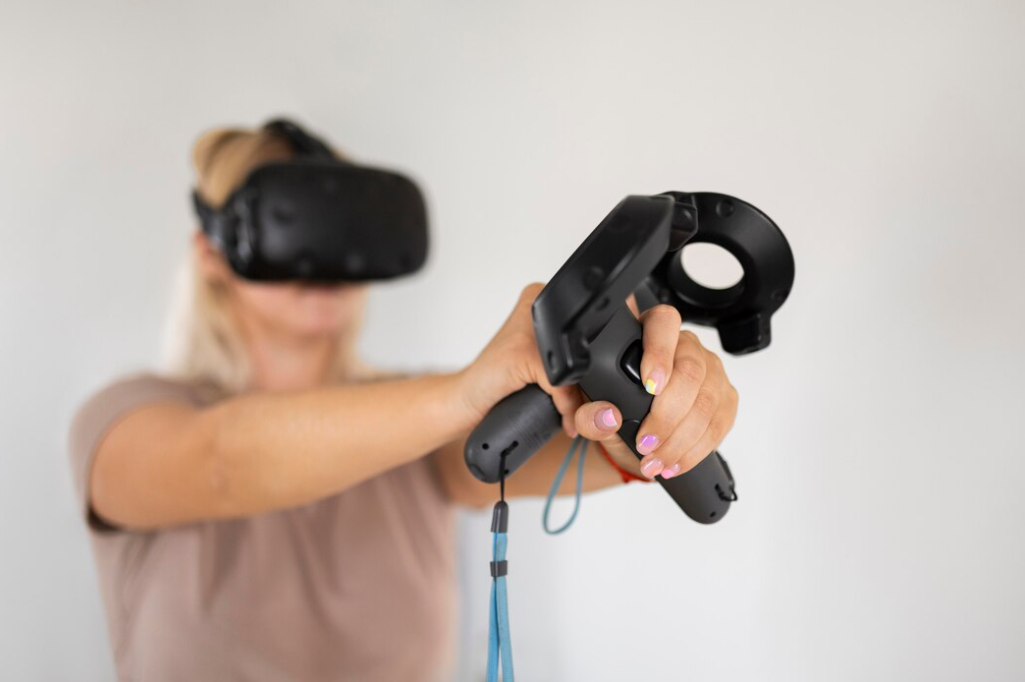Understanding VR Controllers
Exploring the expansive universe of virtual reality (VR) necessitates the use of VR controllers, the indispensable instruments that connect you to the fantastical dimensions of VR. No matter your experience with VR, a comprehensive grasp of how VR controllers operate is essential for elevating your virtual adventures. Dive into this detailed walkthrough to discover how VR controllers amplify the intensity and engagement of your gaming sessions.
The Anatomy of a VR Controller
A VR controller is the gateway to the digital cosmos, furnished with an assortment of inputs like buttons, joysticks, touch interfaces, or tracking spheres. These components are the means through which a user navigates, interacts, and reshapes the virtual environment, adding a layer of authenticity to the virtual experience.
Controller designs vary widely, from the basic models with minimal buttons to advanced versions that track motion and provide tactile feedback. Some controllers advance the interactive experience further with voice command capabilities, deepening the user’s control and immersion in the VR universe.
Among the myriad options for VR controllers, standouts include the Oculus Touch, PlayStation Move, and Vive Controllers, each offering a unique and engrossing approach to virtual gameplay.
Types of VR Controllers
As virtual reality technology progresses, the variety of VR controllers hitting the market has expanded, offering diverse options in terms of size, style, and functionality. Here’s an overview of some prominent types:
- Motion Controllers: These devices capture your physical movements and translate them into the VR space. Equipped with advanced sensors and occasionally haptic feedback, they enhance the realism, allowing for a tangible sense of interaction within the virtual realm;
- Handheld Controllers: These are akin to conventional game controllers and come with an array of buttons and joysticks, enabling traditional gameplay within VR settings;
- Gesture Controllers: Gesture controllers detect and interpret hand movements, offering a more intuitive form of interaction that goes beyond pressing buttons or wielding objects, thus providing a more fluid and natural VR experience;
- Voice Controllers: With voice recognition capabilities, these controllers let you command and manipulate the VR environment through spoken directives, facilitating a hands-free interface that can complement or replace physical controllers;
- Keyboard and Mouse: Although less immersive compared to motion or gesture controllers, the classic keyboard and mouse setup remains a staple for navigation and control in VR, especially for users seeking a conventional gaming experience within virtual landscapes.
How VR Controllers Function

VR controllers are the conduit to deep, interactive virtual experiences, offering tactile engagement with digital surroundings. They translate physical hand motions into digital signals that the computer interprets, enabling the manipulation of objects within a virtual space.
There are primarily two classifications:
- Motion Controllers: These are outfitted with sensors like accelerometers and gyroscopes to trace your spatial movements and rotations. Many also incorporate additional interactive elements such as buttons and joysticks;
- Game Controllers: Designed for traditional gameplay, these feature dual joysticks and an array of buttons, making them ideal for genres like action or platform games.
Modern controllers are often enhanced with tactile feedback, adding another layer of authenticity to the VR journey. Regardless of the variant, they relay commands to the computer, typically through wireless or wired connections, allowing the PC to animate the virtual cosmos accordingly.
Advantages of Using a VR Controller
With the VR controller being the key to a virtual reality adventure, its benefits are manifold:
| Benefit | Description |
|---|---|
| Increased Immersion | VR controllers help interact with the environment naturally, increasing the realism of the experience. |
| Intuitive Control | Designed for ease of use, VR controllers help gamers of all skills quickly adapt to the controls. |
| Improved Tracking | Equipped with advanced sensors, VR controllers accurately capture movements, thereby offering more realistic gameplay. |
| Enhanced Gameplay | The element of complexity and fun that VR controllers add to the gaming experience is unmatched. They can access hidden objects, solve puzzles, and much more. |
Addressing Key Queries
What does a VR joystick do? A VR joystick is a control instrument that lets users interact in the VR environment. Depending upon their comfort level, various controllers influence users’ interactions differently.
How do VR controllers connect? Activate VR controllers by pressing the Windows button for two seconds. Remove the controllers’ battery cover to find a small pairing button on the side. On pressing and holding this, the controllers pair up with your PC. Finally, connect your headset and open the Mixed Reality Portal on your PC.
Do all VR headsets have controllers? While most VR headsets come with handheld controllers, more advanced models provide controllers that resemble haptic gloves. These models allow users to explore the virtual world using natural movements, gestures, and touches.
Tips on Choosing a VR Controller

When shopping for a VR controller, consider the following:
- Comfort: Ensure the controller is comfortable to hold and operate for extended periods;
- Compatibility: Check if the controller is compatible with your VR headset;
- Features: Look for additional features like motion tracking, haptic feedback, and voice recognition as per your requirements.
With the forward march of technology, the evolution of VR controllers is poised to offer even more engrossing experiences. The advent of cordless interfaces, devices enhanced with artificial intelligence, and controllers incorporating biometric feedback signal a thrilling trajectory for the future of VR gaming. These controllers, with their complex architecture and capabilities, have been transformative for the gaming sector. They craft deeply engaging virtual experiences, reshaping the gaming narrative. As technological advancements surge, VR controllers are anticipated to elevate gaming to unprecedented realms of realism.
Conclusion
Essentially, VR controllers are the critical link that connects users to the immersive realms of virtual reality, providing a more dynamic gaming experience than what’s possible with conventional gaming tools. These devices are available in multiple types, such as those focused on motion, handheld, voice-activated, gesture-based, and the timeless keyboard and mouse combination. They function by detecting and relaying the user’s physical motions to the digital domain, enabling interaction with the virtual world. With the ongoing advancements in VR technology, it’s expected that VR controllers will grow even more sophisticated, offering more refined haptic feedback, intricate control mechanics, and an all-encompassing, lifelike gaming adventure.


Average Rating